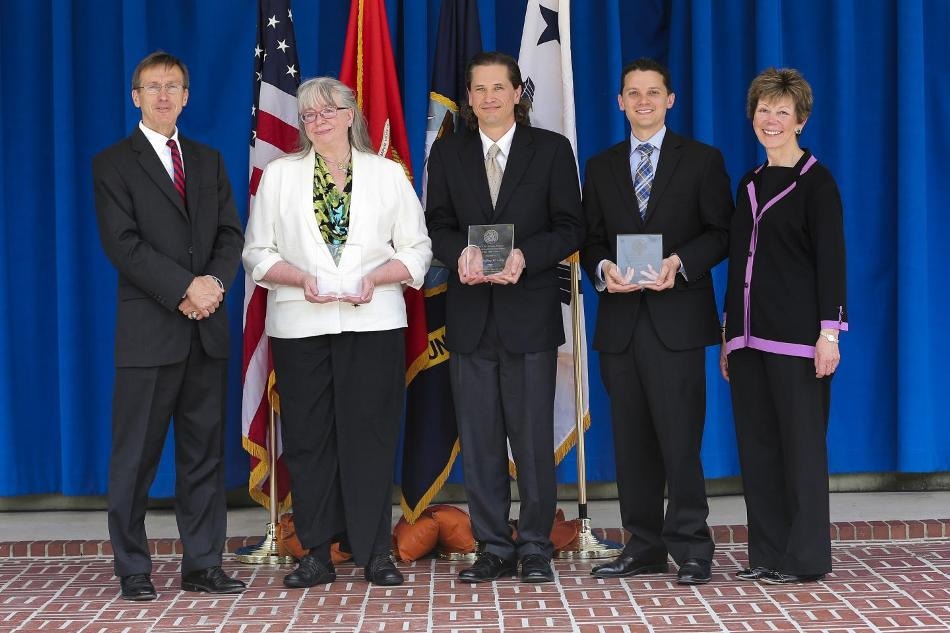Apr 28 2017
A team of researchers at the U.S. Naval Research Laboratory's (NRL) Chemistry Division have created a safer substitute to fire-prone lithium-ion batteries, which were banned for a few applications on Navy ships and other military divisions in recent times.
 (Credit: U.S. Navy / Matthew Poynor)
(Credit: U.S. Navy / Matthew Poynor)
Joseph Parker, Jeffrey Long, and Debra Rolison from NRL's Advanced Electrochemical Materials group are working towards creating a whole family of safer, water-based, zinc batteries. They have exhibited a breakthrough for nickel-zinc (Ni-Zn) batteries in which a three-dimensional (3D) Zn "sponge" is used instead of the traditional powdered zinc anode. With 3D Zn, the battery offers a rechargeability and energy content that rival lithium-ion batteries while sidestepping the safety issues that continue to challenge lithium.
The details of the research can be found in the April 28th, 2017 issue of Science, the premier journal of the American Association for the Advancement of Science. Other contributors to this research article include former NRL staff scientist, Christopher Chervin, National Research Council postdoctoral associate, Irina Pala, as well as industry partners Meinrad Machler and CEO of EnZinc, Inc., Michael Burz.
Our team at the NRL pioneered the architectural approach to the redesign of electrodes for next-generation energy storage. The 3D sponge form factor allows us to reimagine zinc, a well-known battery material, for the 21st century.
Dr. Rolison, senior scientist and chief investigator on the project
Zinc-based batteries are the go-to universal battery for single-use applications, but are not thought to be rechargeable in practice because of their propensity to grow conductive dendrites inside the battery, which can grow long enough to result in short circuits.
The key to realizing rechargeable zinc-based batteries lies in controlling the behavior of the zinc during cycling. Electric currents are more uniformly distributed within the sponge, making it physically difficult to form dendrites.
Parker, the paper’s lead author
The NRL team showed Ni-3D Zn performance in three ways: cycling cells over 100 times at an energy content competitive with lithium-ion batteries; lengthening lifetime in single-use cells; and cycling cells over 50,000 times in short duty-cycles with intermittent power bursts, similar to how batteries are used in certain hybrid vehicles.
With the advantages of rechargeability, the 3D Zn sponge is set to be deployed within the whole family of Zn-based alkaline batteries across the military and civilian zones.
We can now offer an energy-relevant alternative, from drop-in replacements for lithium-ion to new opportunities in portable and wearable power, and manned and unmanned electric vehicles. While reducing safety hazards, easing transportation restrictions, and using earth-abundant materials.
Dr. Long